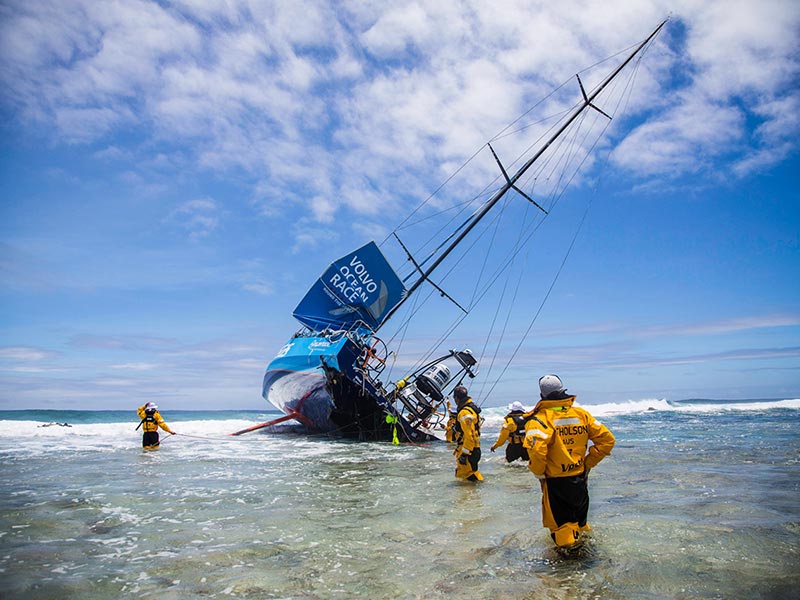Isla Aves – Don’t run into this island!

Photo source: www.isladeaves.org.ve
The following joke has been making the rounds for years, so I’m guessing that you’ve heard it in one form or another:
Americans: “Please divert your course 15 degrees to the North to avoid a collision.”
Canadians: “Recommend you divert YOUR course 15 degrees to the South to avoid a collision.”
Americans: “This is the captain of a US Navy ship. I say again, divert YOUR course.”
Canadians: “No, I say again, you divert YOUR course.”
Americans: “THIS IS THE AIRCRAFT CARRIER USS ABRAHAM LINCOLN, THE SECOND LARGEST SHIP IN THE UNITED STATES’ ATLANTIC FLEET. WE ARE ACCOMPANIED BY THREE DESTROYERS, THREE CRUISERS AND NUMEROUS SUPPORT VESSELS. I DEMAND THAT YOU CHANGE YOUR COURSE 15 DEGREES NORTH. THAT’S ONE-FIVE DEGREES NORTH, OR COUNTER MEASURES WILL BE UNDERTAKEN TO ENSURE THE SAFETY OF THIS SHIP.”
Canadians: “This is a lighthouse. Your call.”
While Snopes says that the above is in no way true, it’s still funny.
What’s less amusing is that a sailor who, after rounding the south-western tip of Grenada, sets a course for the USVI, just missing St. Croix’s eastern point, may find himself coming close to a very similar situation. Yes, that is true. Just change Canadians above to Venezuelan!
Don’t hit the island!
Not far off the Grenada-St. Croix rhumb line (<5 NM) lies a relatively tiny patch of sand and rock known as Isla Aves. Once a subject of some dispute, the island is now considered a Caribbean dependency of Venezuela. To learn about the island, Spanish speakers might enjoy visiting this website, while those who don’t habla español may get more out of this site.

For sailors who will be running the passage described above, or any passage for that matter, make sure that you take note of exactly where you have your autopilot programed to take you. For example, when you set an A to B course with the chart plotter set to small scale, before you hit engage, zoom all the way in, and follow the complete course line to ensure that you won’t bump into anything, like an island. Or better yet, take a look at your paper charts, because a tiny spot like Isla Aves won’t even show up at small magnifications on most chart plotters. You don’t want to end up like these guys!

Team Vestas Wind on Cargados Carajos Shoals – Volvo Ocean Race – 2015


After plotting a course, I always zoom down to the smallest scale and then go over the course from one end to the next, both on the rhumb line and 10 to 20 miles off the rhumb line on both sides looking for reefs. If I find something of significance, I make a manual note of it – and this note will show up in all the scales. You need to look on both sides of the rhumb line and keep looking while you’re making the passage, unless you’re the type that slavishly sticks to the rhumb line regardless of the conditions. Other than the example you noted, every year there are dozens of cases of the same thing happening, human error – although there is rarely any accounting, so you never know the truth. When we were in the San Blas Islands two years ago, over a 5 week period, 4 yachts were lost on reefs. Human error.
Super sad when that happens! The San Blas is a particularly tricky area to navigate. I understand that the charts is this book are the only ones to trust, and even then, only with good light and sharp eyeball navigation:
http://amzn.to/2a1Z7oB
You are correct. The only charts to trust in the San Blas are those made by Eric Bauhaus. They are available in printed form in his guidebook, but the charts themselves are freely available to anybody who has bought the guidebook. We were handed a USB stick with the charts, which we then viewed on our iPad (using SeaClear) or in OpenCPN. This link will provide a digitized copy of the charts to you, if you can prove that you have a printed copy on hand. http://www.legacysailing.com/local_knowledge/san_blas_charts_request.htm
Our friends on TwoFish had both the book, and the digitized charts.
Even with double checking paper charts you could end up with a story like the 40ft racing yacht Gwaihir which ran aground on Fire Island, NY in May of 2009 while on a delivery trip leg from the Chesapeake to Newport, RI. The crew barrelled head on into a huge land mass in fog at 3AM about 35-40nm west of where they should have been! Obviously, this is not some little island on a chart and they were very confident of being on their rhumb line despite the fog.
https://bessingerblog.wordpress.com/2009/05/29/on-the-beach/
Curious about the cause, the only explanation that fits is that they programmed a waypoint for Newport into their GPS using 72 degrees west instead of 71 degrees west. The interesting thing is they had a clear rhumb line from Virginia with 71 degrees straight to Newport avoiding Montauk on Long Island, Block Island on a paper chart. They obviously did not check that the compass heading that they were going on did not agree with the rhumb line on the chart, nor did they validate their position at any time.
The only solution is to doubt everything and triple check with different sources of information periodically to validate that they are consistent with what you expect.
Exactly. Like the comment on one of the recent posts here, you need to trust but verify, inspect what you expect!